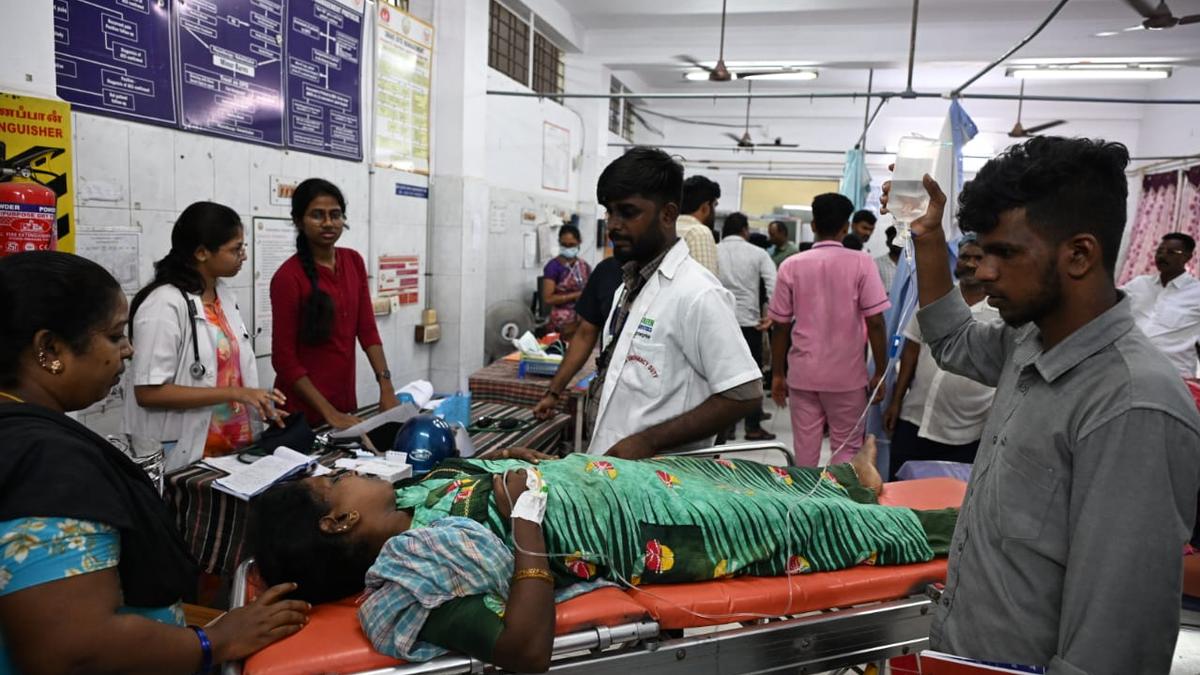
Three die in Chennai’s Pallavaram due to suspected drinking water contamination
The Hindu
Three persons, including a 88-year-old woman, have died and more than 20 people residing in the Pallavaram Cantonment area and a portion of Ward 13 of the Tambaram Corporation were admitted to the Government Chromepet Hospital after they fell sick allegedly due to the consumption of contaminated piped water on Thursday (December 5, 2024).
Three persons, including an 88-year-old woman, have died and more than 20 people residing in the Pallavaram Cantonment area and a portion of Ward 13 of the Tambaram Corporation were admitted to the Government Chromepet Hospital after they fell sick allegedly due to the consumption of contaminated piped water on Thursday (December 5, 2024).
While activists and residents of the locality attribute the deaths to the failure of health officials of the Tambaram Corporation in properly monitoring the supply of piped drinking water, State Health Minister Ma. Subramanian, who visited the patients at the hospital, refuted the claims that the deaths were caused by contamination of drinking water.
The affected persons were residents of Kamaraj Street, Malaimedu, Mutharam Maankoil Street, Mariamman Koil Street, and a portion of the Pallavaram Cantonment area.
On Thursday morning, two persons — identified as Thiruvedhi of Mangadu and Mohana Rangan of Pallavaram Cantonment — died, and within a few hours, another woman named Varalakshmi died, taking the death toll to three. Mohana Rangan’s relatives told the media on the hospital premises that he always consumed the water supplied through the piped network.
Besides the Health Minister, MSME Minister T.M. Anbarasan, Pallavaram MLA E. Karunanidhi, Chengalpattu Collector S. Arunraj, and Tambaram Corporation Commissioner S. Balachandar visited the patients at the hospital and inspected the locality where the alleged water contamination was reported. Officials of the Tambaram Corporation were deputed to take samples of the water being supplied in the locality and implement various other preventive measures, including health camps for residents.
M. Damodaran, a resident of Zamin Pallavaram, complained that water in these areas was supplied through the overhead tank located in 13th Ward. The piped network passes through leather manufacturing units in the area, and the contamination could have happened because of that, he alleged. He said the same ‘contaminated’ water was also supplied to a few streets in Zamin Pallavaram.
Social activist V. Santhanam said that the erstwhile Pallavaram Municipality, before it was merged with the Tambaram Corporation, had warned residents to consume piped water only after boiling it, and the officials had also distributed chlorine tablets periodically, besides spraying liquid chlorine in open wells.

The Karnataka government has drafted a comprehensive master plan for the integrated development of Kukke Subrahmanya temple, the State’s highest revenue-generating temple managed by the Hindu Religious Institutions and Charitable Endowments Department. The redevelopment initiative is estimated to cost around ₹254 crore and aims to enhance infrastructure and facilities for devotees.












